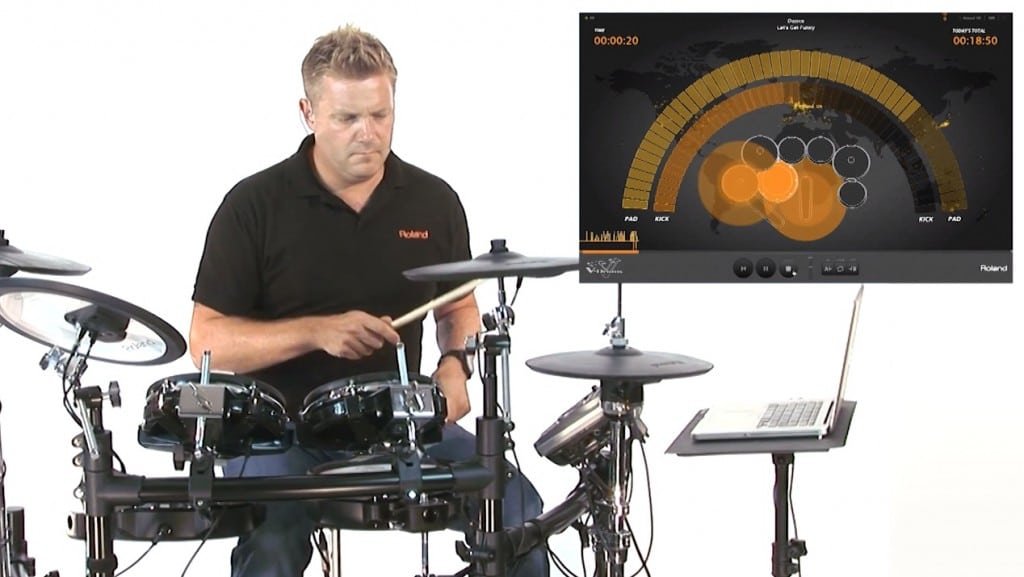IMPROVE YOUR DRUMMING
You’ve played the rubber pads, you know your singles from your doubles, your paradiddles are on fire. You’re ready for the next step. But what is that next step exactly?
Pretty much every drummer, at some point in the journey, questions where to go next with their playing. Like going to the gym, we see an initial improvement and results pretty quickly – there’s instant gratification. After a while, improvements are much more gradual and the effort required for further development is much greater.
Here are some ways to challenge yourself and improve your playing as you move beyond the basics.
THE TIME IS RIGHT…OR IS IT?
Stick technique and nailing those beats is all well and good, but it’s all academic unless you can play in time.
Practicing to a click is a necessary evil; we all need to do it to keep time and develop the internal clock (the natural ability to keep time without slowing down or speeding up) but it’s one of the routines we practice least of all.
A healthy practice session would ideally involve some playing to a click and some without – a 30/70 split here would be a good place to start, although many drummers will admit to 10% or less of their practice time involving a click.
But there are some ways to make click practice much more interesting:
- Try to add fills (or fill-ins) to your click practice. It’s harder to play a fill in time than it is to play a groove in time, and you can make fills more intricate to really challenge yourself.
- A click is great, but many electronic drum kits have a ‘coach’ mode. This will give you scores for accuracy and some can even drop the click out for a bar to see if you can keep time accurately. This is a great way to measure your progress.
- Mix up the timings. 4/4 time (4 beats for 4 bars) is the standard, but try playing an odd number of beats, for example, 3 beats or 5 beats in a bar.
PLAY ALONG WITH MUSIC
Drumming and nailing your coordination can be challenging enough, but don’t forget that any musical instrument is all about playing along with music.
- Playing along to music will help with coordination and timing and it can present a new challenge to your drumming. But before you go straight for Zeppelin’s Greatest Hits album, there’s some things to consider:
- Playing along to your favourite bands or tracks is a lot of fun, but if matching the grooves and fills of your drumming heroes is a stretch too far, you’ll feel worse about your playing, not better!
- Select songs that match your ability level and your gear. It’s no good trying to match the double pedal skills of Joey Jordison if you’re still trying to master the single pedal.
- There is music available, without a drum track, for drummers to play along to. There are CDs and free downloads, but many Roland electronic drum sets have built-in play along songs. In most cases, you can add or mute the click in time with the track and even preview the drum groove and mute it before giving it a go yourself.
- Nailing the tricky parts of a track means going over the same part, over and over. Rewinding the same 10 seconds of a song gets pretty tedious – this is where electronic drum kits come in handy again. Some kits feature a song player with the ability to choose and loop certain sections of a song (including your own MP3 or WAV tracks) and even slow the track down to give you the best chance of nailing it.
JOIN A BAND
Playing along to songs and tracks is great, but there’s nothing like playing drums along to live bass, guitars, keys and more.
Joining a band with other musicians is a whole new challenge, as it tests your technique, timing, musicality and creativity. Playing live with others is the ultimate test, which pulls together everything you’ve learned so far. And it’s not just you it’ll be testing – every other person in the band will be doing the same on their own instrument.
Getting in a band has a big social aspect too – it won’t be long before you get to know the main players on the local circuit and with it you’ll likely get a bunch of requests to join other bands.
Here’s the bonus – if your band is any good, there’s a good chance of earning some extra money from gigs!

MAKE IT INTERACTIVE
Although it’s fun, sitting on your own at your kit will only get you so far.
Interacting with other drummers can transform the drumming experience. This is another ace of the electronic drum kit – there are free apps available that allow you to connect your drums to a laptop or smartphone to play along with tracks and compete against other drummers around the world – in real time.
Earning the bragging rights against fellow drummers can be a real confidence booster, but also helps to keep you motivated and interested.
Taking your drumming a step further requires dedication and a certain degree of challenging your fears and putting yourself in new situations. But the rewards this can bring to your drumming speak for themselves. Just ask drummers like Roger Taylor of Duran Duran – he’s made a career out of it!
Related Articles
BEGINNER’S GUIDE TO LEARNING ELECTRONIC DRUMS
V-DRUMS MASTERCLASS: RECORDING YOUR TD-1
TYPICAL DRUM PLAYING TECHNIQUES WITH V-DRUMS
IT’S NEVER TOO LATE TO LEARN THE DRUMS




